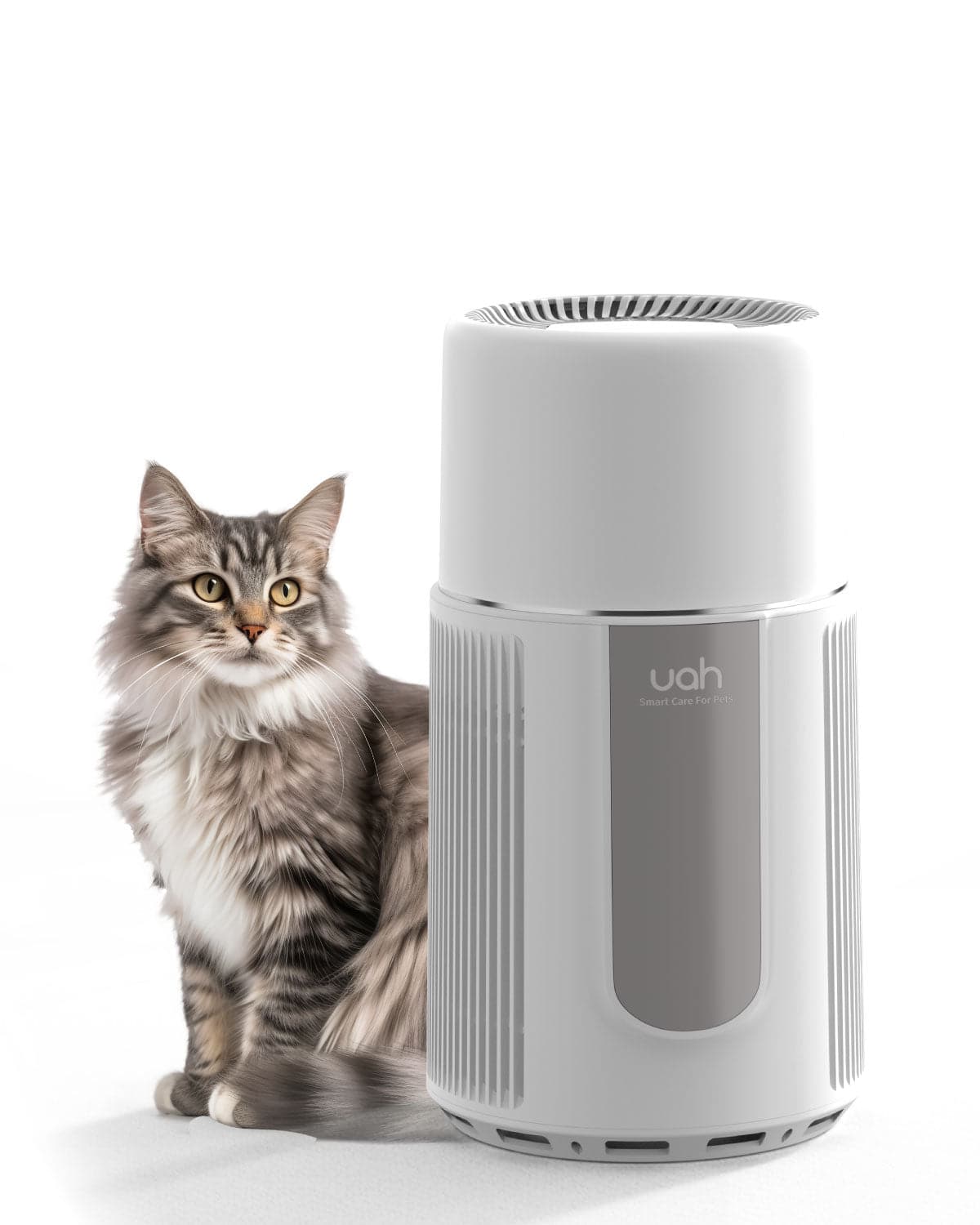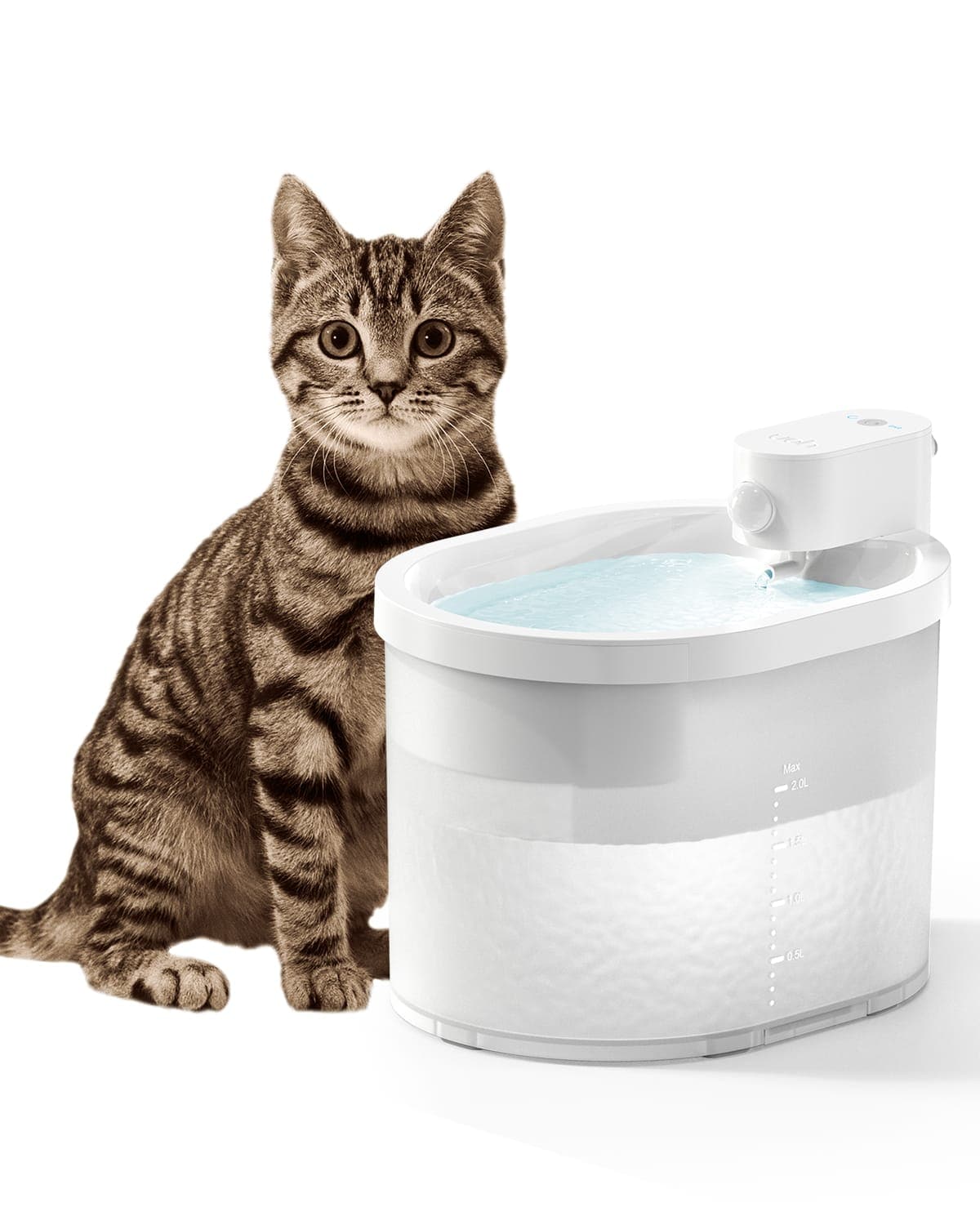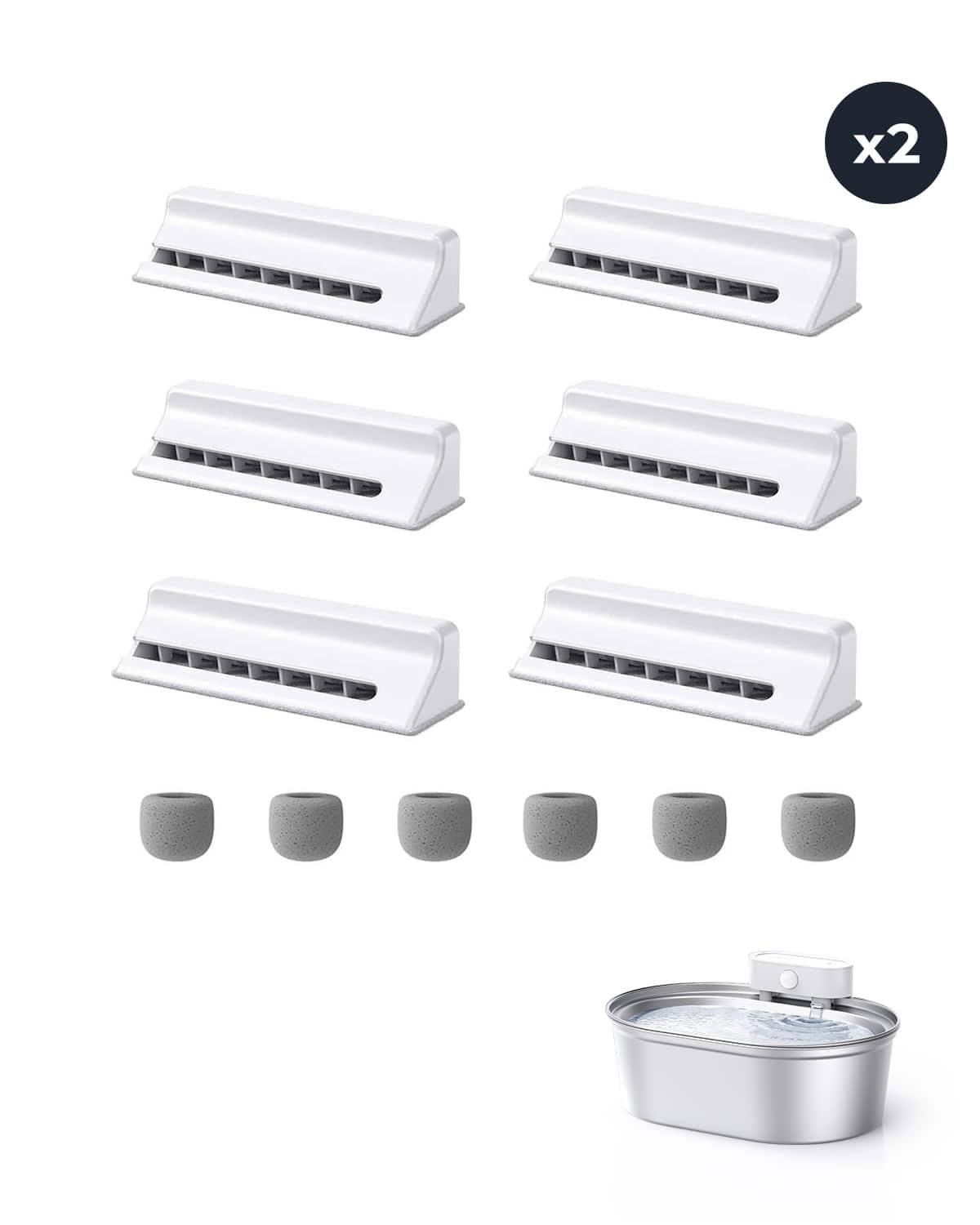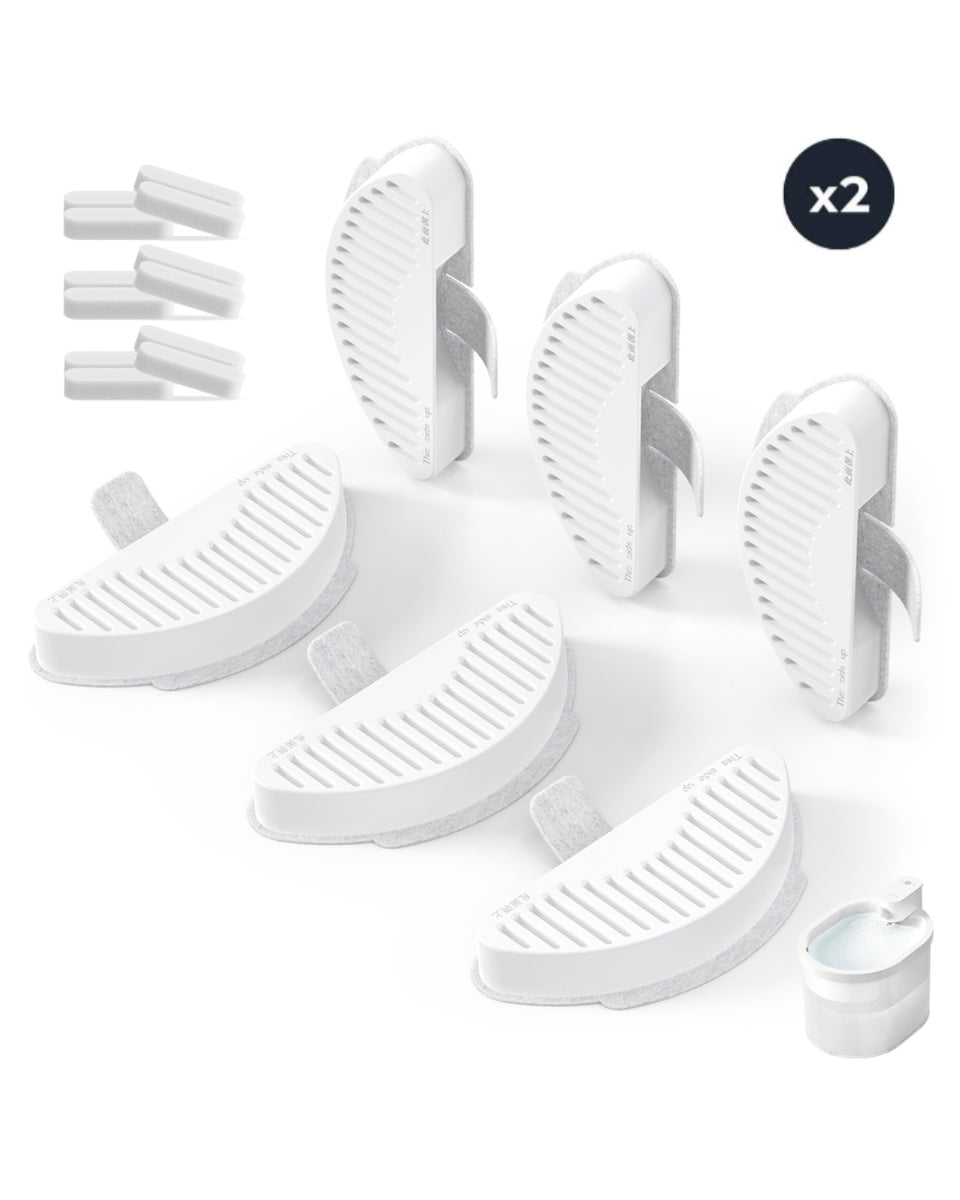Can a Cat Get Electrocuted from a Water Fountain? A Detailed Guide for Pet Safety
|
|
Time to read 7 min

UAHPET Stainless Steel Self-Cleaning Cat Litter Box

UAHPET 2025 Upgrade Visible Stainless Steel Cat Water Fountain Pro

Uah Pet Air Purifier

Uah Pet ZERO Wireless And Automatic Cat Water Fountain

12 pcs Replacement Filter for Stainless Steel Wireless Pet Water Fountain

12 pcs Uah Pet Replacement Filter for ZERO Cat Water Fountain
|
|
Time to read 7 min
Many pet parents are increasingly opting for water fountains to ensure their cats have access to fresh, running water. These devices are great for promoting hydration, which is particularly important for cats who naturally have a lower thirst drive. However, as electric appliances that involve water, pet fountains can occasionally raise concerns among cat owners. One of the most common questions is: Can a cat get electrocuted from a water fountain? In this guide, we'll dive into this topic thoroughly, addressing safety concerns, potential risks, and how Uahpet ensures your pet's safety with our well-engineered products.

Pet water fountains have become popular because they provide a continuous flow of clean water, which helps entice pets to drink more. For many cat owners, a fountain is a necessity, especially since cats are known for their finicky drinking habits. But given that water and electricity are involved, it's understandable to question whether there’s any risk of electrocution.
In most well-designed pet fountains, the risks are minimal, but it's important to understand where dangers might arise, what conditions can elevate these risks, and how to ensure your pet's safety.
The simple answer is: It’s highly unlikely if the fountain is used properly and is well-maintained. Pet water fountains are designed with safety in mind, and manufacturers follow stringent guidelines to ensure that the risk of electrocution is as low as possible. Most cat water fountains use low-voltage power, which significantly reduces the risk of harmful electric shock.
However, it’s not entirely impossible. In rare cases, electrocution might occur if the fountain is faulty or if safety precautions are neglected. Here, we’ll look at potential scenarios where risks may arise and how to mitigate them.
Faulty Electrical Components
The most significant risk of electrocution comes from faulty wiring or damaged components. If the power adapter, cord, or pump develops a fault—whether from age, chew marks, or improper handling—this could lead to exposure to electrical currents.
Solution: Regularly Inspect the Fountain
To avoid such risks, it’s crucial to inspect all components of your pet fountain regularly. Look for frayed cords, cracks in the adapter, or signs of wear on the pump. If anything looks damaged, replace the affected parts immediately. Many manufacturers, including Uahpet, provide replacement parts so you don’t have to buy a new fountain.
Water Leakage
Water leakage can also pose a risk. If water somehow reaches the electrical components of the fountain, it may cause a short circuit, leading to a potential shock hazard.
Solution: Check for Leaks and Secure Connections
Ensure that all parts are correctly assembled, and no leaks are present. The pump should be securely housed, with no loose fittings that could allow water to seep in. Many pet fountains have sealed compartments for electrical components to prevent such issues, and checking these seals periodically will further ensure your pet’s safety.
Chewing the Power Cord
Cats, especially kittens, may be inclined to chew on electrical cords, which can lead to exposed wires and potential risks. Chewing on cords not only endangers your cat but can also cause serious electrical problems with the fountain.
Solution: Use Cord Protectors
Cord protectors are a great way to keep your pet safe. These plastic coverings make it difficult for pets to chew through cords, significantly reducing the risk of electrocution. Additionally, positioning the cord out of your cat's reach is a proactive way to eliminate this risk.
Improper Use of Non-Original Components
Using non-original parts or adapters can lead to electrical issues. Generic components may not meet the necessary safety standards or may be incompatible with your fountain, leading to malfunctions.
Solution: Use Original Components and Accessories
Always use the parts and accessories provided by the manufacturer. Uahpet products are designed to function safely with our own components, and third-party parts could compromise the safety features of the fountain.

At Uahpet, we understand pet owners' concerns about safety, especially when electricity is involved. Our cat water fountains are designed with multiple safety features to give you peace of mind when using our water fountains for your beloved pets.
Low-Voltage Pumps
Uahpet pet fountains use low-voltage pumps, which minimize the risk of electric shock. Even if there were a failure, the low voltage would significantly reduce any potential harm to your pet.
Waterproof Housing for Electrical Components
All electrical components in Uahpet fountains are enclosed in waterproof housing, designed to prevent any contact between water and electricity. This sealed design is an essential feature that helps keep your pets safe from electric shock.
BPA-Free and Non-Toxic Materials
The materials used in our fountains are BPA-free and non-toxic, ensuring that your cat is not exposed to harmful substances while drinking water. This not only protects against electrical hazards but also ensures that the water is safe and healthy for your pet.
Anti-Chew Cord Design
Our pet fountains feature durable power cords that are resistant to chewing. Additionally, we recommend using extra cord protection if you have an especially curious pet that tends to chew on things.
In addition to the specific safety measures we incorporate into our products, there are general safety tips you can follow to keep your pets safe from electrical hazards at home.
Regular Inspections
Take a few minutes each week to inspect the fountain for any signs of wear and tear. Regular maintenance can help you identify and solve potential issues before they become hazardous.
Placement of the Fountain
Place the fountain in a low-traffic area where the likelihood of it being accidentally knocked over is minimal. Avoid placing it near other electronic devices or power outlets where spilled water could cause a problem.
Elevate the Power Source
Keep the power adapter and outlet elevated or in a location that your pet cannot reach. This ensures that even if a leak occurs, the water cannot reach the power source.
Monitor Chewing Habits
For pets who have a habit of chewing, providing them with chew toys can help divert their attention from electrical cords. Additionally, using bitter sprays designed for cords can deter pets from chewing.
There are a few myths and misconceptions about pet fountains that can cause unnecessary concern. Let’s address some of them here:
Myth: All Electric Pet Fountains Are Dangerous
Fact: Modern pet fountains, particularly from reputable brands like Uahpet, are designed with stringent safety measures. As long as they are used as intended, the risk of electrocution is minimal.
Myth: Metal Parts in Pet Fountains Conduct Electricity
Fact: Any metal parts used in pet fountains are typically non-corrosive and are positioned away from electrical components. They do not pose a risk of conducting electricity to the water.
Myth: Pet Fountains Should Not Be Left Plugged In
Fact: Pet fountains are meant to be left plugged in to maintain a constant flow of fresh water. However, you should always unplug the fountain before cleaning or maintenance to avoid any risks.

Is It Safe to Leave My Pet Fountain On All Day?
Yes, it is safe to leave a Uahpet pet fountain on all day. Our fountains are designed to operate continuously with safety features such as low-voltage pumps and waterproof housing. Continuous operation ensures that your cat always has access to fresh, filtered water.
What Should I Do If My Cat Chews the Power Cord?
If your cat has chewed the power cord, stop using the fountain immediately and replace the damaged cord. Using a damaged cord can be extremely dangerous. To prevent future chewing, use a cord protector and offer alternative chew toys.
Can I Use an Extension Cord with My Pet Fountain?
While it is possible to use an extension cord, make sure it is of high quality and positioned in a way that your pet cannot access or chew it. Ensure the extension cord is not near any water source that could pose a hazard.
How Can I Be Sure My Pet Fountain Is Safe?
Always choose a fountain from a reputable brand that follows industry safety standards, such as Uahpet. Regularly inspect the fountain for signs of wear, use original replacement parts, and follow the manufacturer’s instructions for setup and maintenance.
At Uahpet, pet safety is at the forefront of our product design. We understand that your pets are family, and we prioritize their health and well-being in every product we create. Our water fountains are crafted to deliver the highest safety standards, ensuring that you can provide your pet with fresh, clean water without worrying about electrical hazards.
We continuously test our products to ensure they meet rigorous safety standards. Our team of engineers works diligently to identify potential risks and design solutions that enhance the safety of our products. When you choose a Uahpet water fountain, you can be confident that your pet’s safety is our top priority.
While the thought of using an electric appliance around your beloved cat can be intimidating, rest assured that Uahpet water fountains are designed with extensive safety features that make the risk of electrocution almost nonexistent. By taking a few simple precautions, such as regular maintenance, using original parts, and preventing your pet from chewing on cords, you can ensure that your cat stays hydrated safely.
Modern pet fountains are a fantastic way to provide your cat with the hydration they need, and Uahpet is committed to providing both convenience and safety in every product. We hope this guide has helped address any concerns you may have had regarding electrocution risks and that you feel more confident in the safety of using a pet fountain in your home.